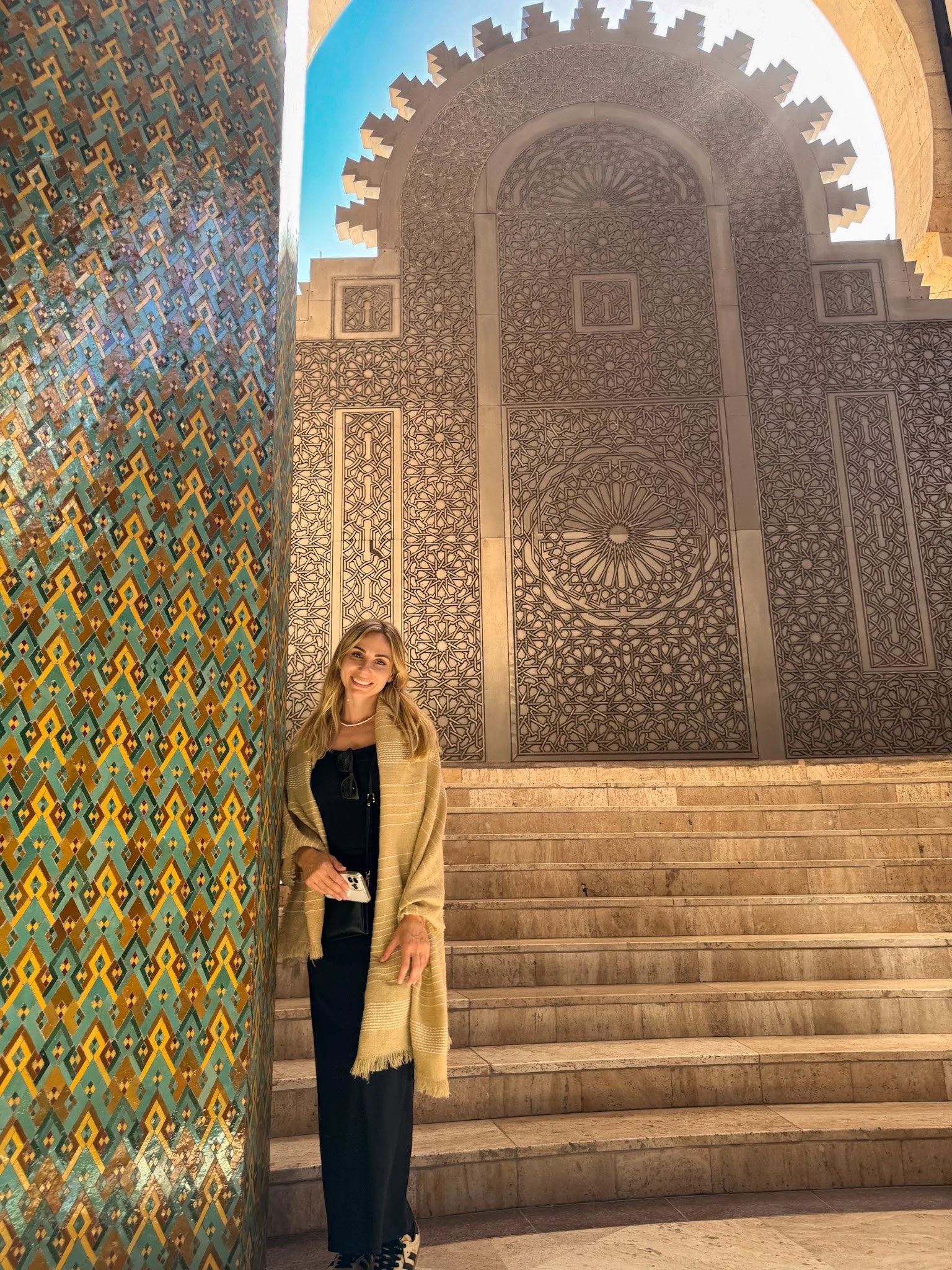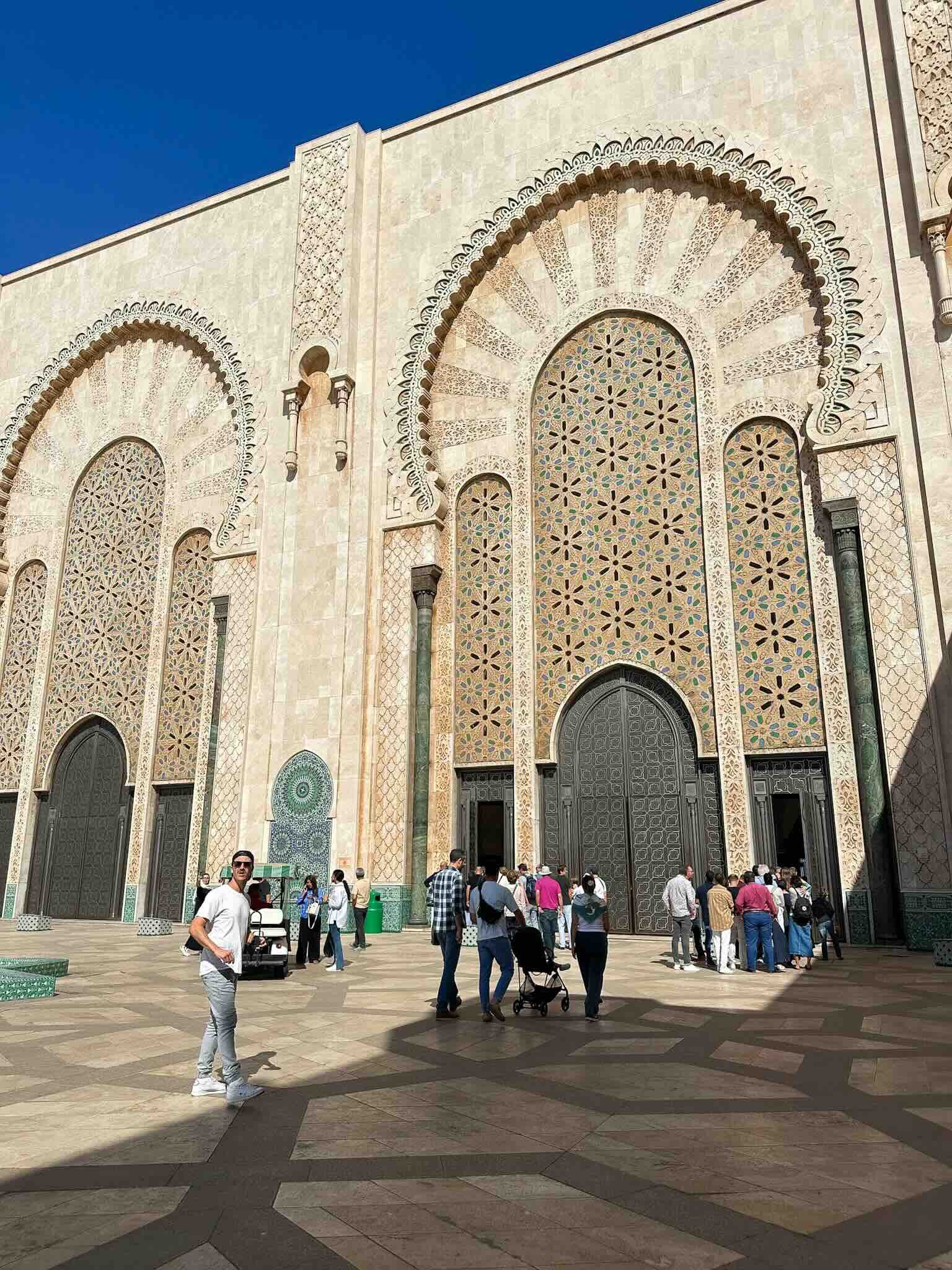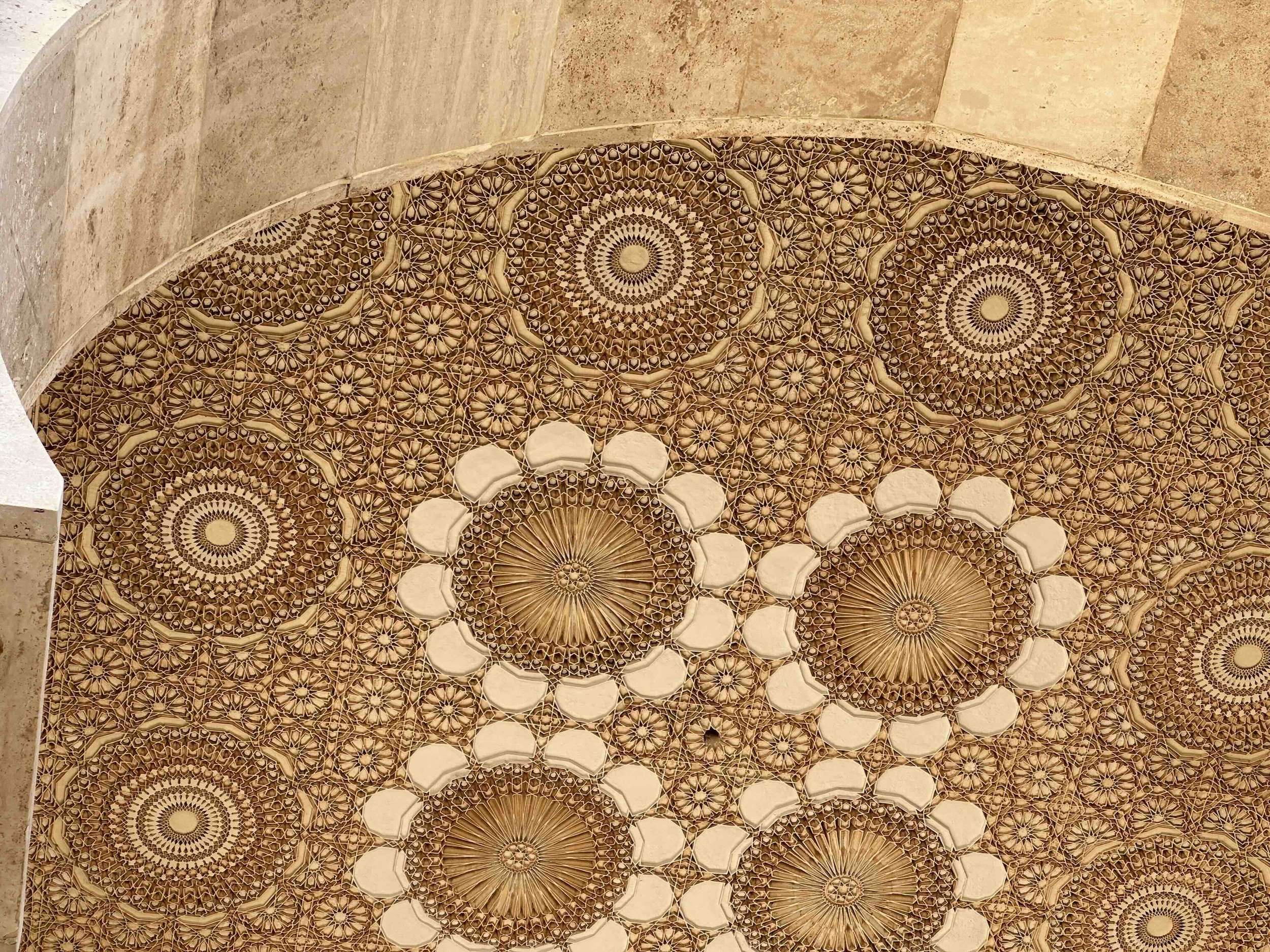8 things to do in Casablanca: Morocco's Vibrant Heart
For many travelers, Casablanca is simply a transit point on the way to Morocco’s more famous cities, but for us, it’s the first stop on our adventure through this incredible country.
This bustling port city, situated along the Atlantic Ocean, gives us our first taste of Morocco’s vibrant energy. Casablanca blends modern architecture with rundown high-rises, creating a captivating mix of colonial influences (most recently from France), traditional Moroccan culture, and stunning coastal views. From the moment we arrive, we’re drawn in by the lively streets, where colorful murals cover building facades, vendors sell knock-off designer goods, and the scent of spices fills the air in the traditional Medina at the heart of the city. Casablanca, the largest city in Morocco, is often overshadowed by more touristy destinations like Marrakech and Fes, but we found this rustic and real city of 4 million people to have its own unique charm. It’s a place where East meets West, and old meets new, offering plenty to discover for the curious traveler.
First Impressions of Casablanca
As a Muslim-majority city, Casablanca is filled with the sounds of daily calls to prayer, and you’ll notice that men often outnumber women in the streets—a cultural difference that shapes the city’s daily rhythms. You’ll notice palm-lined boulevards, motorbikes wizzing by and the food vendors cooking and selling street-food on corners with a billow of smoke being sent into the air.





Language is another fascinating layer; while Arabic and Berber are the official languages, French is widely spoken due to Morocco’s history as a former French protectorate. This blend of languages shows up everywhere, from signs and menus to conversations with your local taxi driver (although we used the ride-sharing service Careem for transparency and best pricing.). The local currency, the Moroccan dirham, is also used across the country. You’ll might find that international credit cards are accepted in larger shops and restaurants, though cash is king in many local markets. We withdrew money from a bank atm (lower fees) using our multi-currency Wise Bank card.
Fun Fact: The name "Casablanca" means "White House" in Spanish, a reference to the whitewashed buildings that give the city its signature look.
1. The Hassan II Mosque: A Wonder on the Atlantic
No visit to Casablanca is complete without seeing the Hassan II Mosque, an architectural marvel that cost around $1 Billion to build and literally stands on the edge of the Atlantic Ocean. As the largest mosque in Africa, it is also one of the largest in the world. The mosque’s towering minaret (which is attached to the mosque and issues the call to prayer loud and clear over city several times a day) is 210 meters high, and is officially the tallest in the world.
One unique aspect of the Hassan II Mosque is its openness to non-Muslim visitors, which is rare for mosques in Morocco. Several tours are held daily in various languages, making this a fantastic opportunity for visitors to experience the grandeur and significance of this place. We were able to squeeze into a midday tour, which informed us of the intricate craftsmanship. Polished marble floors are heated, and the mosque’s roof is engineered to open, allowing fresh air and sunlight to flood the prayer hall on special occasions like Ramadan. The build took 6 years and was completed in 1993.
Fun Fact: The mosque sits on a platform extending into the Atlantic Ocean, and it was built to withstand the rough coastal weather, using advanced materials like titanium for the doors (imported from Russia) and enormous chandeliers (from Italy).







2. La Sqala: Dining in History
One of the culinary gems in Casablanca is La Sqala, a charming restaurant set inside an 18th-century Portuguese fortress. This unique setting, with its high stone walls and leafy courtyard, offers a perfect ambiance to enjoy a traditional Moroccan meal.
At La Sqala, guests can enjoy classic Moroccan dishes such as tagine (slow-cooked stew), couscous, and freshly baked bread. We visited twice during our stay, enjoying a delicious breakfast smorgasbord, and the fish tagine for dinner.
Fun Fact: The restaurant’s name, La Sqala, refers to the fortress’s purpose as a defense tower, which originally served to protect the city’s port.
3. Rick's Café: A Classic Casablanca Experience
For those seeking a slice of Hollywood history, Rick’s Café offers a nod to the classic 1942 film, Casablanca. Inspired by the iconic movie, this restaurant and bar reimagines the legendary "Rick's Café Americain" where Humphrey Bogart and Ingrid Bergman’s characters shared pivotal scenes. The ambiance captures the film’s glamour and nostalgia, complete with a piano playing As Time Goes By, echoing the film’s most famous song.
Although Rick’s Café is a tourist favorite, it’s also a great spot to relax and soak up the atmosphere. The menu features a mix of Moroccan and international cuisine, including seafood and Moroccan appetizers.
Fun Fact: The actual film did not have scenes filmed in Casablanca, but the restaurant's modern-day version captures the essence of the movie.
4. The Corniche: Casablanca’s Beachfront Promenade
For a more relaxing experience, the Corniche is Casablanca’s picturesque beachfront promenade, stretching for several miles along the Atlantic coast. Lined with palm trees, cafes, and resorts, this area is a popular spot for locals and tourists alike. Visitors can take a stroll along the promenade, enjoy the cool sea breeze, and watch the waves crashing against the shore.
The Corniche area is also home to several beaches, where locals and tourists alike enjoy the warm weather, swimming, and socializing. Though the beaches here are not known for being pristine, the lively atmosphere and stunning views of the ocean make it a worthwhile visit.
Fun Fact: The Corniche was developed during the French colonial period and remains one of the most vibrant and modern areas in Casablanca. It’s also a popular spot for evening walks, where visitors can watch the sunset over the Atlantic Ocean.
5. Old Medina
While not as famous as those in other cities like Marrakech, the medina in Casablanca offers a glimpse into the city’s rich cultural history. Narrow streets are lined with traditional shops selling spices, textiles, and handcrafted items and knock-off goods. In the Old Medina, locals welcome you warmly, often with a “where are you from?” or "please have a look," as they invite you into their shops to buy a souvenir. Haggling is part of the culture here, so don’t be afraid to bargain or shop around.
Fun Fact: Morocco is famous for its spices, and Casablanca is no exception. Visitors can find spice markets where colorful piles of saffron, cumin, and other spices are on full display.




6. Royal Palace of Casablanca
While not open to the public, you can admire the exterior of this grand palace and its surrounding gardens, which reflect Moroccan royal architecture.
7. Casablanca Lighthouse (Phare d’el Hank)
Located at the edge of the city, it offers panoramic views of the Atlantic coast. You can climb to the top for a unique view of Casablanca. We weren’t able to make it, but most comments on Google Reviews are positive.
8. The Train to Marrakech: A Scenic Journey
And finally, after spending a full day in Casablanca, we caught a train to Marrakech, which takes about three hours and offers a comfortable, scenic journey through the Moroccan countryside. Tickets for the ONCF (National Office of Railways) cost around $20 USD for a first-class seat, making it a convenient and affordable option for travelers.
Fun Fact: The ONCF trains in Morocco are modern, usually air-conditioned (ours wasn’t), and reliable (on time), making them a popular way to travel between major cities. The journey from Casablanca to Marrakech is one of the most scenic train rides in the country, offering views of rolling hills and vast stretches of farmland.
To join us behind the scene, follow Kristina on Instagram for more.

